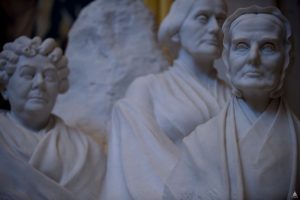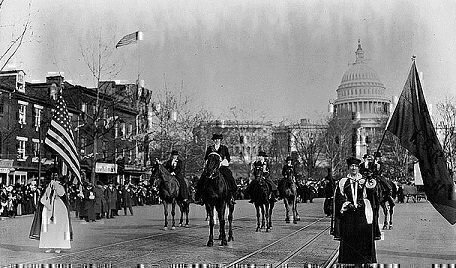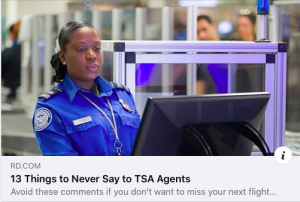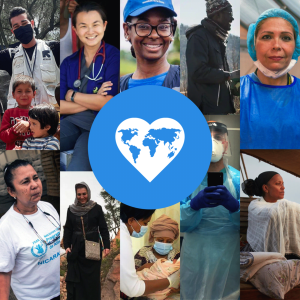Lisa Niver's Blog: We Said Go Travel, page 89
August 28, 2020
Online Journalist of the Year! We Said Go Travel Summer News August 2020

Summer News 2020 with We Said Go Travel:
I am honored to be nominated for Online Journalist of the Year!
[image error]
I am a finalist for FIVE Southern California Journalism Awards!
[image error]
[image error]
[image error]
[image error]
Thank you to everyone who has supported me and to all of the outlets who published my work. Please click here for my print, digital and broadcast content which is nominated. Thank you to the Los Angeles Press Club for this opportunity to be recognized!
[image error]
Thank you to THRIVE GLOBAL for publishing my three articles about books:
Finding Ways to Be More Human with Jen Pastiloff Is Talking Through Technology Making You More Human ? with Rana el Kaliouby Are you ready to PIVOT? Be Your Own Publicist! Ask Aliza Licht
[image error]
During COVID-19, I have now been in Los Angeles since March 9, 2020. That is 172 days! I have been focused on what can I do and have been publishing new voices on my site! Learn about these projects here.
[image error]
THANK YOU TO:::
Afluencer for including me in your 10 Top Travel Influencers of 2020 My Aunt Terry Lee Marzell for including me in her Chalkboard Champions series from my visit to Enkereri School in KenyaCenter for Cultural Innovation for a Los Angeles County Visual Artists grant.New Leaders Project (NLP) at the Jewish Federation for highlighting me! See photo below!
[image error]
Enjoy my new video of the waves at Santa Monica Beach. I filmed with my new LGV60ThinQ phone:
WHERE CAN YOU FIND MY TRAVEL VIDEOS?
Here is the link to my video channel on YouTube where I have over one million two hundred thousand views on YouTube! (Exact count: 1,240,000 views)
Thank you for your support! Are you one of my 2,812 subscribers? I hope you will join me and subscribe!
For more We Said Go Travel articles, TV segments, videos and social media: CLICK HERE
Find me on social media: Instagram, Facebook, Twitter, Pinterest, YouTube, and at LisaNiver.com. My social media following is now over 160,000 and I am verified on Twitter.
My fortune cookies said:
“Be patient. The Great Wall didn’t got built in one day.” (It really did say didn’t got built! We all have things to learn and work on!)
“Be not simply good; be good for something.”
Stay safe and healthy! We will travel again….Happy Summer!
Lisa
[image error]Sunset in Santa Monica in Feb 2020
The post Online Journalist of the Year! We Said Go Travel Summer News August 2020 appeared first on We Said Go Travel.
August 26, 2020
Suffragists Knew Voting Was Only the First Step to Equali...
Suffragists Knew Voting Was Only the First Step to Equality. The ERA Could Finish the Job.
The post appeared first on We Said Go Travel.
Celebrate Women’s Equity Day Aug 26, 1920!

“MEN, THEIR RIGHTS, AND NOTHING MORE; WOMEN, THEIR RIGHTS, AND NOTHING LESS.” SUSAN B. ANTHONY, MOTTO, THE REVOLUTION JOURNAL (1868)
[image error]Susan B. Anthony, 1891.
The year 2020 marks the 100th anniversary of the passage of the 19th Amendment, guaranteeing and protecting women’s constitutional right to vote. This historic centennial offers an unparalleled opportunity to commemorate a milestone of democracy and to explore its relevance to the issues of equal rights today. The Women’s Vote Centennial Initiative, a collaboration of women-centered institutions, organizations, and scholars from across the US, works to ensure that this anniversary, and the 72-year fight to achieve it, are commemorated and celebrated throughout the United States.
[image error]Portrait Monument to Lucretia Mott, Elizabeth Cady Stanton and Susan B. Anthony located in Capitol Rotunda: Elizabeth Cady Stanton (1815-1902), president of the National Woman Suffrage Association from 1865 to 1893; author of the woman’s bill of rights, which she read at the Seneca Falls, New York, convention in 1848; first to demand the vote for women.
Susan B. Anthony (1820-1906), abolitionist, temperance advocate, and later president of the National American Woman Suffrage Association, who joined with Stanton in 1851 to promote woman suffrage; proposed the constitutional amendment passed many years after her death.
Lucretia Mott (1793-1880), Quaker reformer and preacher, who worked for abolition, peace, and equality for women in jobs and education; organizer of the 1848 Seneca Falls, New York, convention, which launched the women’s rights movement.
THE RIGHT OF CITIZENS OF THE UNITED STATES TO VOTE SHALL NOT BE DENIED OR ABRIDGED BY THE UNITED STATES OR BY ANY STATE ON ACCOUNT OF SEX.
AMENDMENT XIX, AUGUST 26, 1920
[image error]Inez Milholland leading the March 1913 national suffrage procession.
FROM THE NATIONAL CONSTITUTION CENTER: Why is August 26 known as Women’s Equality Day?
The 19th Amendment gave women the right to vote nationally on August 18, 1920, so why is Women’s Equality Day on August 26th each year?

The simple answer is that even when a constitutional amendment has been ratified it’s not official until it has been certified by the correct government official. In 1920, that official was U.S. Secretary of State Bainbridge Colby. On August 26, 1920, Colby signed a proclamation behind closed doors at 8 a.m. at his own house in Washington, D.C, ending a struggle for the vote that started a century earlier.
The New York Times ran the story about the document’s signing on its front page and noted the lack of fanfare for the historic event.
Colby had been asked by women’s suffrage leaders Alice Paul and Carrie Chapman Catt to allow groups in Colby’s office for the document’s signing and to film the event. Instead, Colby told reporters that “effectuating suffrage through proclamation of its ratification by the necessary thirty-six States was more important than feeding the movie cameras.”
The Times explained that Colby was concerned about the rivalry between Paul and Catt and wanted to avoid a public scene at the signing.
“Inasmuch as I am not interested in the aftermath of any of the friction or collisions which may have been developed in the long struggle for the ratification of the amendment, I have contented myself with the performance in the simplest manner of the duty devolving upon me under the law,” Colby said.
A package of documents from the state of Tennessee had arrived by train in Washington around 4 a.m. It included the official ratification document from the state legislature.
How Tennessee became the 36th state to ratify the amendment on August 18, 1920, was a story in itself. Congress had passed the proposed amendment a year earlier, and it was supported by President Woodrow Wilson.
By the middle of 1920, 35 states had voted to ratify the amendment, but four other states—Connecticut, Vermont, North Carolina and Florida—refused to consider the resolution for various reasons, while the remaining states had rejected the amendment altogether.
So, Tennessee became the battleground to obtain the three-fourths of states needed to ratify the amendment. Harry T. Burn, a 24-year-old legislator, was set to vote against the amendment, but switched his vote on the Tennessee state house floor at the urging of his mother, assuring the 19th amendment’s ratification.
Yet, even after Burn’s deciding vote, anti-suffrage legislators tried desperately to nullify the previous vote.
In 1971, Representative Bella Abzug championed a bill in the U.S. Congress to designate August 26 as “Women’s Equality Day.” The bill says that “the President is authorized and requested to issue a proclamation annually in commemoration of that day in 1920, on which the women of America were first given the right to vote.”
As a footnote, the amendment certification process has changed since 1920. Now, the Archivist of the United States, who heads the National Archives and Records Administration (NARA), is responsible for finalizing the ratification process.
Back in 1920, Secretary Colby’s attorney reviewed the documents that arrived from Tennessee. Today, NARA’s Office of the Federal Register reviews the documents and writes the proclamation for the Archivist of the United States to sign.
Section 106(b) of the United States Code spells out the finality of the process:
“The Archivist of the United States shall forthwith cause the amendment to be published, with his certificate, specifying the States by which the same may have been adopted, and that the same has become valid, to all intents and purposes, as a part of the Constitution of the United States.”
[image error]
RIGHTFULLY HERS: AMERICAN WOMEN AND THE VOTE EXHIBIT
The National Archives invites you to browse the wealth of records and information documenting the women’s rights movement in the US, including photographs, documents, audiovisual recordings, educational resources, exhibits, articles, blog posts, lectures and events.
[image error]Susan B. Anthony (standing) and Elizabeth Cady Stanton, 1880.
“THE RIGHT [TO VOTE] IS OURS. HAVE IT, WE MUST. USE IT, WE WILL.”
ELIZABETH CADY STANTON, 1848
More Events: Centennial Update
[image error]
[image error]
[image error]
Sufferin’ ’til Suffrage! Let’s VOTE!
Suffragists Knew Voting Was Only the First Step to Equality. The ERA Could Finish the Job.
The post Celebrate Women’s Equity Day Aug 26, 1920! appeared first on We Said Go Travel.
August 24, 2020
Is Talking Through Technology Making You More Human? with Rana el Kaliouby

[image error]
Read this article on THRIVE GLOBAL
As our world is more connected by technology, the algorithms that run it are more important. In her book, Girl Decoded: A Scientist’s Quest to Reclaim Our Humanity by Bringing Emotional Intelligence to Technology, Rana el Kaliouby’s journey to change the ability of computers to communicate better with more empathy unfolds. As a young Muslim woman from Egypt, she studied in both Cambridges, England and Massachusetts. She challenged family rules, gender roles and handedness; she is left-handed and there is a belief that using the left hand inspires the devil to be one’s companion. She overcame her personal battles and as cofounder and CEO of Affectiva, an artificial intelligence company, and Emotion AI pioneer, she now battles for us all with her dedication to bring emotional intelligence to the digital world.
[image error]
As Rana el Kaliouby explains in her book, “My goal is not to build emotive computers, but to enable human beings to retain our humanity when we are in the cyber world.” Her quest is “to humanize technology before it dehumanizes us.” In the tech world, it is still rare to see a woman in charge let alone, “a brown-skinned computer scientist at that—in a field that is still very male and very white.”
[image error]Rana practicing public speaking for her dad at age 5.
Photo courtesy of Rana el Kaliouby
She has been required to find her own voice and reconcile her dreams and goals with her upbringing. “The journey that has taken [her] from “nice Egyptian girl” to a strong “woman in charge.”
While her mother was one of the first female computer programmers in the Middle East and worked at the Bank of Kuwait, it was unusual for a married mother to work at all and she still upheld and modeled very traditional gender roles when at home.
Her personal story of life in the Middle East includes a childhood as an expat in Kuwait and then having to leave quickly when Saddam Hussein, then President of Iraq, invaded and being in Egypt during Arab Spring with schools and offices all closed, curfew at 3pm and no flights in or out of the country.
[image error]The Four Rs – Rana, her mother Randa, and two sisters Rasha and Rula.
Photo courtesy of Rana el Kaliouby
Rana el Kaliouby and her husband, Wael, were very supportive of each other’s dreams and while normally a married Egyptian woman would not move from Egypt to England to study, halfway around the world, he was very open-minded and supportive of her applying to schools overseas.
I was fascinated when she reported that “in the Middle East, women actually outperform men in STEM subjects, perhaps because we have to work harder to prove ourselves.” I had not thought to look at women in STEM in other countries and loved learning that “there were equal numbers of male and female computer science majors, and this is true throughout the Middle East. Indeed, [she] was shocked to learn that in the United States, computer science majors, and majors in all other STEM (Science, Technology, Engineering, and Math) disciplines, are overwhelmingly male.”
Her work is informed by her need to bridge her cultural heritage and evolving roles for women which requires empathy and that is what she is training computers to do as well. While she was studying far from her family, it was painful that no one could notice her feelings of being distraught and lonely and afraid she could not complete her work in time as the computer shared none of the “nonverbal signals, facial expressions, and fluctuations in voice, gesture, and body language. All of this is lost when we communicate online.” She focused her work on “teaching computers how to read faces, the way humans do, so they could recognize and respond to our facial expressions, from smiles to scowls.”
[image error]Rana el Kaliouby at Newnham College in Cambridge, UK.
Photo courtesy of Rana el Kaliouby
She realized that “computers are functionally autistic: They can’t see or process emotion “data” or respond to emotion cues.” And that when we “interact in the emotion-blind cyber world, we are all rendered functionally autistic.” She was introduced to Simon Baron-Cohen at Cambridge and his work within the world of autism. The same “human” skills she was teaching computers were also needed by humans on the autism spectrum. He shared his database of raw video files with her which was somewhat unusual in that they were from such different fields but the collaboration made it possible for her to continue her work. As she said, “It was beyond my wildest dreams, and amazingly generous, the kind of sharing of knowledge that propels research and society forward.” Later in her career, when given the option to share and help a fledgling student or researcher, Rana always was generous to others as Baron-Cohen was to her. She understood that we all need to work together just as we all may need a tool of technology to assist us.
As Rana el Kaliouby said: “I believe that technology can augment human potential. Just as people use canes or wear glasses or use hearing aids to help them walk, see, or hear, an emotion prosthetic can help boost our empathy skills. Such a tool doesn’t take away from our other strengths, but adds to our innate abilities.”
[image error] Rana el Kaliouby on her graduation day in Cambridge
with her father and PhD advisor Peter Robinson.
Photo courtesy of Rana el Kaliouby
Her concern is that our current path of emotion blind technology creates a risk that we will lose our social skills in the real world. Will we forget how to be kind, compassionate and empathetic to one another?
In Cambridge, England, Rana worked with Ofer Golan, the first Israeli she had ever met. Baron-Cohen said: “Here were two scientists (an Israeli and an Egyptian) on a similar quest, from countries that have historically been in conflict. But what I really enjoyed was watching these two scientists connect as human beings and talk about concepts like empathy.” The scientists could work together but the algorithm might not recognize them. “In the case of facial decoding, if I show the algorithm only faces of middle-aged white men, when it reads the face of a brown Egyptian girl, it may not be able to identify it—it may not even recognize it as a face at all… an algorithm is only as open-minded and smart as the human who built it.” An Israeli PhD student,Tal Sobol-Shikler, was planning to join the lab but wrote and said that she didn’t want to apply if it would cause conflict. Real world problems between Israel and Egypt could have stopped these women from working to change the world together in the lab.
One woman would change the trajectory of Rana el Kaliouby’s entire life. She read Rosalind Picard’s book, “Affective Computing,” and would meet her during her PhD program and eventually work in her Affective Computing Group at the MIT Media Lab as a Post-Doc. Picard’s work reimagined the relationship between humans and technology and highlighted the importance of creating smarter Artificial Intelligence that could interpret and process emotion. They applied for a National Foundation grant to build the “Social-Emotional Prosthesis for Autistic Individuals,” for people on the autism spectrum to understand the emotional cues of others and to enhance human-to-human communication. Rana was invited by the founder of the MIT Media Lab, Nicholas Negroponte, to be a postdoc and she wondered, “What if I could build something that really helped autistic kids? What if this technology changed for the better the way human beings “connected” online?”
She made the decision to move 5,400 miles away to America without consulting her husband. She said that she “had something important to contribute to the world and I wanted to see it through.” I loved how she talked about joining the lab, “In Egypt, you get dinged for taking risks. It’s discouraged in a conformist society. You don’t want to call attention to yourself, you don’t want to stand out…At the lab, being bold, thinking big, and taking risks were rewarded. Because when you take a risk, when you take a leap of faith, you build something new, and even if it fails, you learn from it.”
[image error]Rana el Kaliouby, her husband, Wael and two children at
her daughter, Jana’s middle school graduation in Milton, MA.
Photo courtesy of Rana el Kaliouby
She had to explain herself to the others in the lab as she was the only one wearing a hijab, a scarf head covering. One person asked, “Do you wear the scarf because of medical reasons?” They were surprised that she did not drink alcohol and had only dated her husband. She was a radical thinker but not a rebellious dater!
At one point, her family persuaded her to stay in Egypt in an attempt to save her marriage from divorce, so when she was selected by MIT Technology Review as one of its “35 Innovators Under 35” in technology in September 2012, she did not accept her award in person. However, when she received the 2015 Ingenuity Award from Smithsonian, which recognizes the “shining achievements, of individuals in nine categories, who have had a revolutionary effect on how we perceive the world and how we live in it.” She was divorced, living in the United States and accepted in person. She also was invited to give a talk at TEDWomen and shared how her work at Emotion AI is about “humanizing our technology to promote better understanding and better human-to-human connections.” She is also a Forbes’ Top 50 Women in Tech, 2018 Inc Female 100 and 2018 Fortune 40 Under 40.
[image error] Rana el Kaliouby accepting the Smithsonian American Ingenuity Award for Technology at the National Portrait Gallery in Washington D.C., 2015.
Photo courtesy of Rana el Kaliouby
She has been raising concerns about racism and bias being baked into our technology. “If we continue on the Silicon Valley tech track, where only a very small number of people design systems for the rest of us, technology is going to be biased—perhaps not intentionally, but we will be unwittingly duplicating the biases that exist in society. Our technology has to detect the smiles of people living in remote areas of India, the smiles of hijabi women, and the smiles of transgender people.”
Rana el Kaliouby allowed Dr. Ned T. Sahin to work with her Affectiva software, with it he developed “Brain Power’s product, the Empowered Brain, with game-like apps that enable children and adults with autism, attention deficit hyperactivity disorder (ADHD), and other brain-related challenges to learn social-emotional skills.”
As Rana el Kaliouby explained: This is “the fulfillment of the mission I began nearly two decades ago: to build an emotion prosthetic for people who needed an EQ boost.”
Erin Smith is using Affectiva’s software to track alterations in facial expression to develop a tool to detect Parkinson’s disease in its earliest stages. In working with Smith, Rana created “a whole new use of Emotion AI technology and also supported this young person in her journey of discovery and innovation.”
[image error]
Rana el Kaliouby and Roz Picard celebrating the 10th anniversary of Affectiva at the MIT Media Lab where it all began. Photo courtesy of Rana el Kaliouby
Rana el Kaliouby is accomplishing her goals to make us more human while in contact with technology rather than allowing emotionless technology make us less human. “Why can’t we design Emotion AI in a way that makes us more human, that makes us more collaborative and understanding of the subtle cues of others, and makes us more empathetic so that it helps us connect better?” I cannot wait to try ROC Speak which is an AI coach by Hoque called CoCo or Collaboration Coach that improves your video-conferencing etiquette and presentation skills.
Her Emotion AI is a “tool to improve our interactions, help us see past our own biases, and judge people on the basis of their potential, not on stereotypes…These are the skills that give people with high EQ the edge in life, the “soft skills” that will dominate the workplace in the world of automation.”
In hospitality and in homes, we are seeing more and more social robots. From Google Home to Echo Dot to robots like Pepper at the Waldorf Astoria in Las Vegas as well as Fetch and Jett at Vdara in Vegas who have bodies and can bring you things to Rose, the scintillating artificial intelligence chat bot at The Cosmopolitan of Las Vegas, who can lead you on a graffiti art tour of the property by text message. This “new class of robots is emerging today that will live, play, and work alongside humans…but if they are to be accepted by us, and fit seamlessly into our lives, social robots must have social and emotional intelligence.” A robot named, Mabu, is a home health companion. “Mabu’s mission is to help people better manage the challenges of chronic disease, like managing symptoms; dealing with stress, anxiety, and depression; sticking to a diet or exercise plan; and medication adherence through education and support.” Mabu can help people take their medicine on time so that they get better.
Next Rana el Kaliouby is tackling driving as 94% of all serious accidents can be linked to human error. Over 40,000 people in the USA die in automobile accidents each year which is as many as die from breast cancer each year. In an effort to save lives, she is using Emotion AI tools to create cars with intuition.
In her career, she has created computers with greater emotional intelligence and technology that is responsive to human beings. Next she envisions “a world that is full of compassion and empathy, where people from all corners of the planet can not only communicate with one another with and through technology but do so in a way that doesn’t erode our humanity—but rather makes us more caring, better human beings.”
Read this article on THRIVE GLOBAL
[image error]
Read all my articles on THRIVE GLOBAL
[image error]
The post Is Talking Through Technology Making You More Human? with Rana el Kaliouby appeared first on We Said Go Travel.
August 23, 2020
Sufferin’ ’til Suffrage! Let’s VOTE!
The post appeared ...
10 Rules for Students, Teachers, and Life by John Cage an...
10 Rules for Students, Teachers, and Life by John Cage and Sister Corita Kent
The post appeared first on We Said Go Travel.
August 21, 2020
Can you help #SaveThePostOffice?

This Saturday, August 22, at 11 a.m., people from all walks of life who are determined to defend the essential services provided by the United States Postal Service—including our ability to vote by mail—will push back on the Trump administration’s attacks by organizing a grassroots action outside the post office around our country. #SaveThePostOffice
[image error]
This is part of a nationwide mobilization taking place at post offices across the country on Saturday.
Groups including Indivisible, the Leadership Conference on Civil & Human Rights, MoveOn, NAACP, RuralOrganizing.org, Service Employees International Union, Vets for the People, and the Working Families Party are participating.
Those joining the actions will call on Postmaster General Louis DeJoy to resign in the wake of mail slowdowns, and will call on Congress to “protect and save the post office from Donald Trump” and act to safeguard the integrity of our mail and elections. The actions will show Americans coming together to stand up for a postal system that connects us, that we rely on for medications, paychecks, and more, and that will literally be counted on to deliver democracy in the elections this fall.
To promote safety given the ongoing COVID-19 pandemic, the action will take place outdoors and have a physical distancing plan, and attendees will be asked to wear masks.
People across the country are currently signing up to host events at
SaveThePostOffice.net
.
[image error]
Together, we’re coming together to support a beloved system that every American relies on. From the most remote village in the Alaskan tundra to the tiniest island in the Everglades, there’s one connection we’ve always depended on: the mail.
The mail shapes our lives and our livelihoods. It’s how millions get our medicines, send holiday greetings and receive the resources we depend on. And, in this pandemic, the mail is how millions of us will deliver our democracy.
[image error]
FROM INDIVISIBLE: On August 12, 2020, House Oversight and Reform chairwoman Carolyn Maloney (D-NY) introduced a new bill meant to respond to Trump’s political games. The Delivering for America Act would prohibit the Postal Service from implementing any changes to the operations or level of service it had in place on January 1, 2020, until the COVID-19 pandemic has ended. This legislation would maintain current service standards as well as the integrity of our elections and bedrock democratic principles.
As Rep. Maloney noted in her announcement of the bill, “Our Postal Service should not become an instrument of partisan politics, but instead must be protected as a neutral, independent entity that focuses on one thing and one thing only—delivering the mail. Millions of people rely on the Postal Service every day to communicate, to access critical medications, and to vote. At this juncture in our nation’s history, when the number of Americans voting by mail for this Presidential election is expected to more than double from the last, Congress must protect the right of all eligible citizens to have their vote counted. A once-in-a-century pandemic is no time to enact changes that threaten service reliability and transparency. The Delivering for America Act would reverse these changes so this fundamental American service can continue unimpeded.”
The post Can you help #SaveThePostOffice? appeared first on We Said Go Travel.
August 20, 2020
13 Things You Should Never Say to TSA!

Thank you to Lindsay Tigar for including me in her Reader’s Digest article: “13 Things to Never Say to TSA Agents.”
[image error]
[image error]
“Are you looking for a bomb in there?”
Jet-setter and travel blogger Lisa Niver reminds travelers that a TSA agent’s number one priority is safety. It’s a job that most people take seriously and definitely one that should be respected. So while it’s annoying when your bag is searched, remember why it’s being done—and never joke about anything that could put others in danger, like insinuating you have a bomb or a gun. Niver explains that TSA agents have to take every comment into consideration, and since they don’t know you, your “joking” comment may prompt them to investigate to make sure you’re not actually a terrorist.
[image error]
“Will a twenty help me get through this line faster?”
When you have only ten minutes to board your flight and the next one isn’t until tomorrow morning, thanks to augmented schedules during the pandemic, you may feel desperate to make it. But winking at a TSA agent and slipping him or her a twenty? Niver says that tactic won’t be effective—and it could land you in mega trouble. Much like police officers, TSA agents can’t take any cash in exchange for leniency, and they raise an eyebrow at those who think they could be so easily persuaded. In fact, if you try to bribe them, you could end up getting arrested!
[image error]
The curse word of your choice
No matter how many laps around the sun we take, it’s important to remember the golden rule our parents taught us from the start: Treat others as you want to be treated. All too often, frustrated or exhausted passengers will curse at TSA agents when the line is moving too slowly, which is obviously disrespectful. Niver says any type of aggression, even verbal, can send you packing and cause you to miss your flight—or even be put in a holding room for questioning.
[image error]
“This is ridiculous!”
What would you do if someone told you that your job was ridiculous? You’d probably be offended, right? And if you ever suggest that you could outsmart a TSA agent, they won’t take it well. That’s why Niver urges passengers to put themselves in the agent’s shoes and to try to have patience during the screening process. “They are paid to make sure that you are safe, that they are safe, and that all the passengers in the terminal or on the plane are safe,” she says. “And that may take longer than we would like.” Your outbursts won’t help the situation—and could delay things even further.
Read the full Reader’s Digest article: “13 Things to Never Say to TSA Agents.”
[image error]
The post 13 Things You Should Never Say to TSA! appeared first on We Said Go Travel.
August 19, 2020
UN World Humanitarian Day 2020 #RealLifeHeroes

This is not a story… #RealLifeHeroes | World Humanitarian Day 2020
What do you call a person who runs towards danger to save others? Who is undaunted by disease, famine, drought, floods, earthquakes, tsunamis, locusts, conflict zones—and now the COVID-19 pandemic?
Would you call that person a hero?
We would, too.
World Humanitarian Day is held every year on 19 August to pay tribute to aid workers who risk their lives in humanitarian service, and to rally support for people affected by crises around the world.
On 19 August 2003, a bomb attack on the Canal Hotel in Baghdad killed 22 humanitarian aid workers, including the UN Special Representative of the Secretary-General for Iraq, Sergio Vieira de Mello.
Five years later, the United Nations General Assembly adopted a resolution designating 19 August as World Humanitarian Day. Each year, World Humanitarian Day focuses on a theme, bringing together partners from across the humanitarian system to advocate for the survival, well-being and dignity of people affected by crises, and for the safety and security of aid workers. This year, the already difficult work carried out by humanitarians has been made even more so by the COVID-19 global pandemic.
We wish to pay tribute and offer the most heartfelt thanks to these #RealLifeHeroes who put everything on the line to help others, no matter how daunting the odds. Our obsession with myths and legends has been with us since the dawn of culture. Their fictional fantastic feats, embodied enemies and arduous journeys teach us how to dream big and summon the courage needed to do what’s right.
But the experiences of humanitarians—who are providing food to vulnerable people in need, providing safe spaces for women and girls in lockdown; delivering babies; fighting locusts and running refugee camps, all amid the COVID-19 pandemic—these heroes of our world are perhaps more worthy of admiration and celebration, because they’re real. As real as the people they help. World Humanitarian Day is a campaign by OCHA, the United Nations Office for the Coordination of Humanitarian Affairs.
[image error]
Belitza is a lawyer working as a protection officer for UNHCR in Venezuela. She has been doing for the past 10 years and is motivated by the impact she has been able to have on the people she helps—including many women, children, and indigenous communities. She works in southern Venezuela in Guasdualito—a border town that has been receiving thousands of returnees since the onset of the COVID-19 emergency. Here she is providing assistance to those who are quarantined upon returning as a preventative measure against the pandemic.
“What I like most about what I do is the closeness with people that my work in the field allows me to have. It’s not a remote office, so I can see, know, feel people…and that has a greater impact on how we respond to the needs of people.”
[image error]
Dr. Marie Roseline Darnycka Bélizaire, is a medical worker and Epidemiologist who helps fight #COVID19 in the Central African Republic. “This is what we do. We cannot leave people to die,” she says.
With her four degrees, @marieroselinebelizaire could have been any kind of doctor. But she chose community medicine to work at the grassroots level. “I want to be with and work with the community. I grew up in a big family. I used to go to the village – I love being and working in those places. The best thing we can do is prevent communities from having to be healed, by keeping them healthy.”
In the age of #COVID19, doctors and other health personnel are called front-line workers. But humanitarian doctors are often quite literally on the front lines of both war and disease. Epidemiologist Dr. Marie Roseline Darnycka Bélizaire has braved violent conflict in hotspot after hotspot as she’s risked everything to help communities fight outbreaks, from HIV to yellow fever to Ebola—and now COVID-19
“What keeps me awake at night is thinking about how we would respond if a new disease emerges in the war zones of CAR at the same time as we are dealing with this pandemic. Also, keeping my team safe from both the virus and the violence, while we try to reach the most vulnerable…. And all of those who die in ambulances because we reach them too late.”
[image error]
Umra Omar, from the Lamu archipelago in Kenya, is the founder of Safari Doctors, a mobile doctors unit that provides free basic medical care to hundreds of people every month from more than 17 villages in Lamu. While modern healthcare is modeled on urban realities, 70% of Kenya’s population lives in remote areas. A key perspective shift was not seeing healthcare as static, but something that could actually reach out to the people in need.
“I think humanitarian work needs to stop being a ‘by the way’ thing.
It should be something that we are living as the norm.”
[image error]
2019: #WomenHumanitarians 24 hours. 24 Stories.
#WomenHumanitarians 24 hours. 24 Stories.
The post UN World Humanitarian Day 2020 #RealLifeHeroes appeared first on We Said Go Travel.
August 18, 2020
Sufferin’ ’til Suffrage! Let’s VOTE!

Thank you 19th Amendment
The Nineteenth Amendment (Amendment XIX) to the United States Constitution prohibits the states and the federal government from denying the right to vote to citizens of the United States on the basis of sex.
REGISTER TO VOTE! CLICK HERE
Passed by Congress June 4, 1919, and ratified on August 18, 1920, the 19th amendment granted women the right to vote. The 19th amendment guarantees all American women the right to vote.
[image error]
Sufferin’ ’til Suffrage from SCHOOL HOUSE ROCK
Music & Lyrics: Bob Dorough, Tom Yohe
Performed By: Essra Mohawk
Animation: Kim & Gifford Productions First Aired: 1976
Now you have heard of Women’s Rights,
And how we’ve tried to reach new heights.
If we’re “all created equal”…
That’s us too!(Yeah!)But you will proba … bly not recall
That it’s not been too … too long at all,
Since we even had the right to
Cast a vote.(Well!)Well, sure, some men bowed down and called us “Mrs.” (Yeah!)
Let us hang the wash out and wash the dishes, (Huh!)
But when the time rolled around to elect a president…What did they say, Sister, (What did they say?)They said, uh, “See ya later, alligator,
And don’t forget my … my mashed potatoes,
‘Cause I’m going downtown to cast my vote for president.”Oh, we were suffering until suffrage,
Not a woman here could vote, no matter what age,
Then the 19th Amendment struck down that restrictive rule. (Oh yeah!)And now we pull down on the lever,
Cast our ballots and we endeavor
To improve our country, state, county, town, and school.(Tell ’em ’bout it!)Those pilgrim women who …
Who braved the boat
Could cook the turkey, but they …
They could not vote.
Even Betsy Ross who sewed the flag was left behind that first election day.(What a shame, Sisters!)Then Susan B. Anthony (Yeah!) and Julia Howe,
(Lucretia!) Lucretia Mott, (and others!) they showed us how;
They carried signs and marched in lines
Until at long last the law was passed.Oh, we were suffering until suffrage,
Not a woman here could vote, no matter what age,
Then the 19th Amendment struck down that restrictive rule. (Oh yeah!)And now we pull down on the lever,
Cast our ballots and we endeavor
To improve our country, state, county, town, and school. (Right On! Right On!)Yes the 19th Amendment
Struck down that restrictive rule. (Right On! Right On!)Yes the 19th Amendment
Struck down that restrictive rule.
(Yeah, yeah!
Yeah, yeah!
Right on!
We got it now!)Since 1920…
Sisters, unite!
Vote on!
REGISTER TO VOTE! CLICK HERE
The post Sufferin’ ’til Suffrage! Let’s VOTE! appeared first on We Said Go Travel.
We Said Go Travel
We Said Go Travel is a global community of over sixteen hundred writers with articles from every continent.
Stories are shared with photos and video from a perspective of the transformative power of travel. We Said Go Travel has hosted live and online events as well as travel writing contests around the world. ...more
- Lisa Niver's profile
- 57 followers



